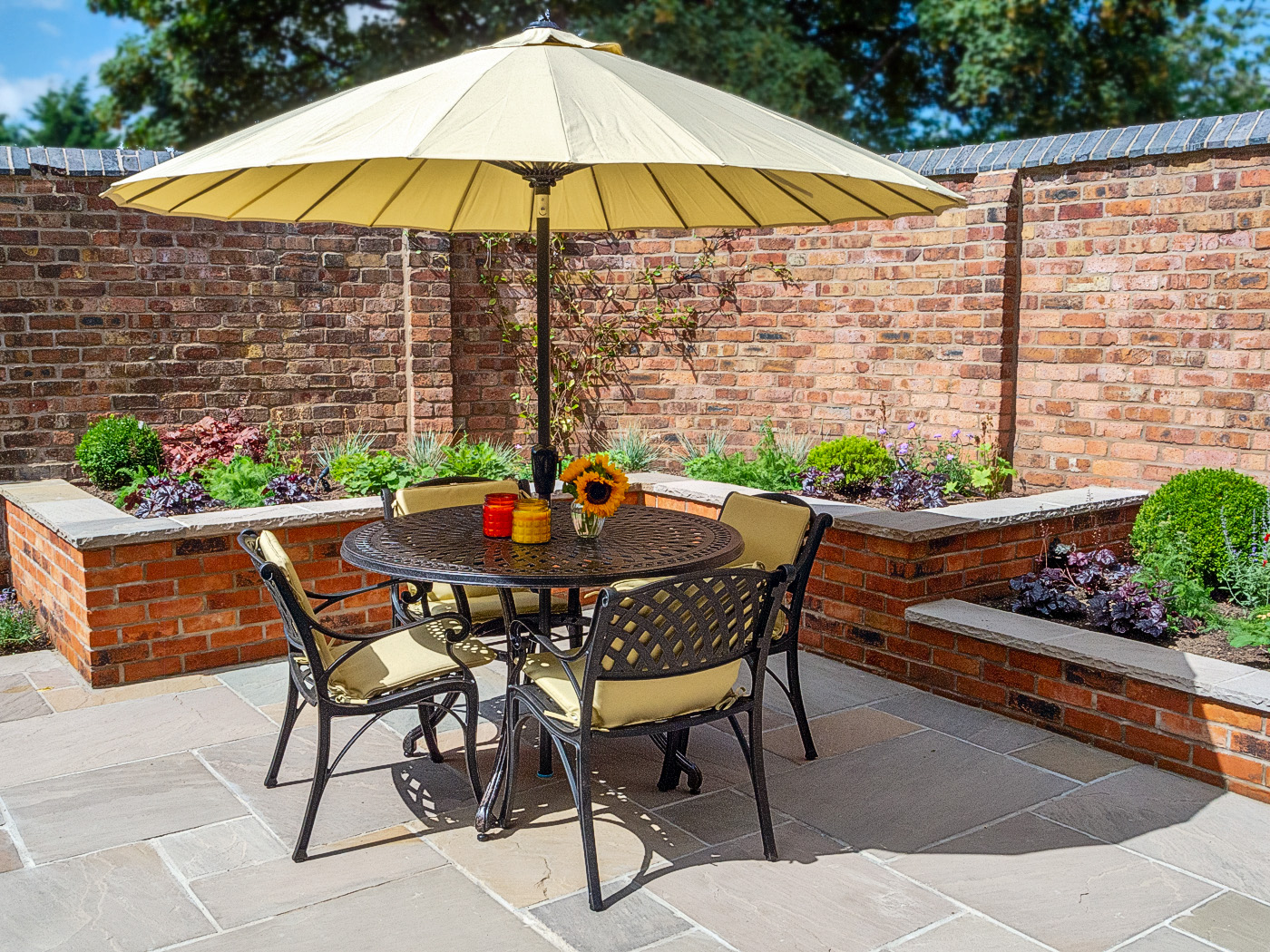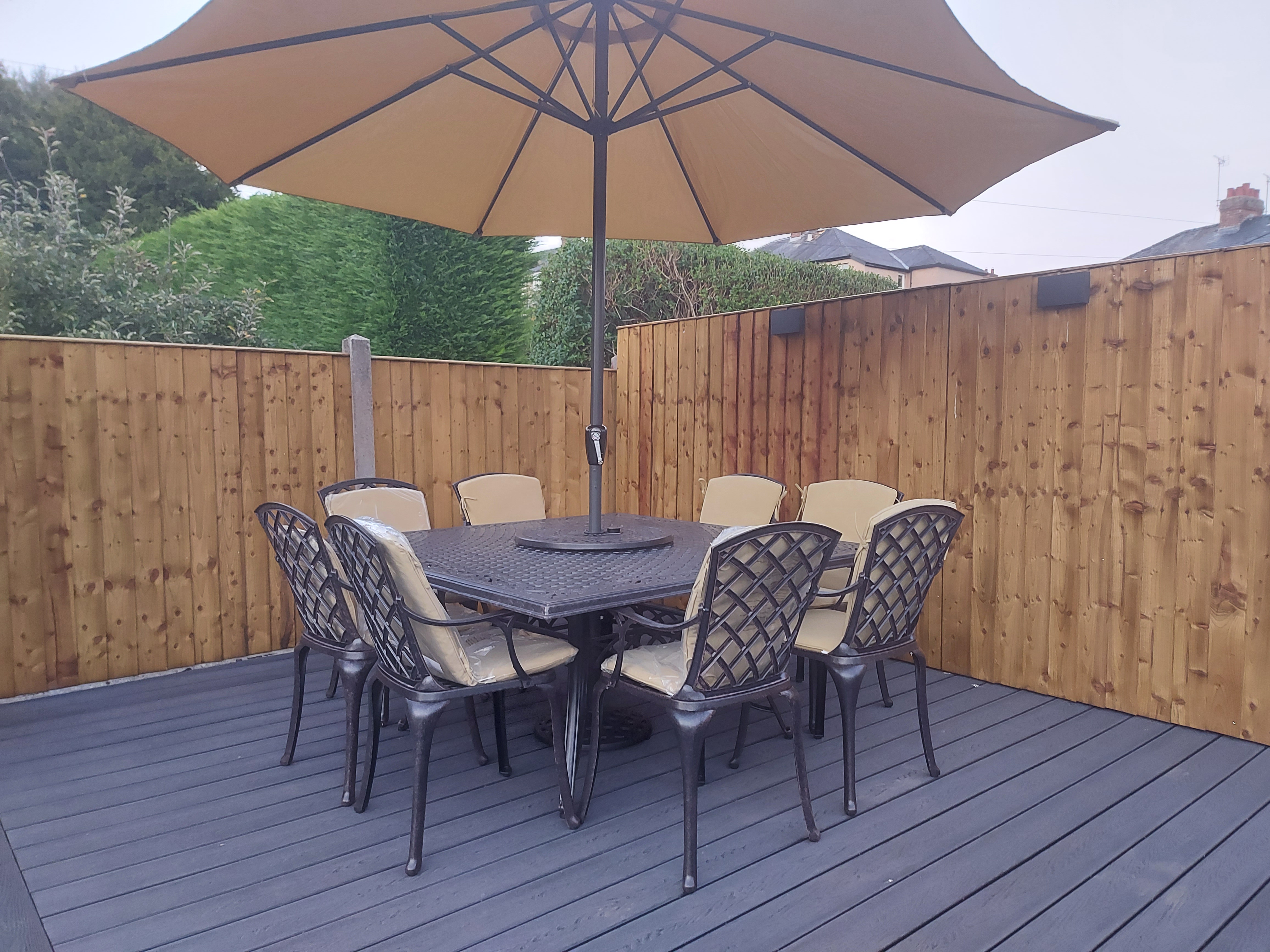Patio cleaning is a job many of us put off. I know I and many of the team here at Lazy Susan HQ do. In my own garden, I have a mixture of paved patio and a raised deck area, and they both have their own advantages and disadvantages when it comes to cleaning and maintenance.
However, for that reason, that's what I want to focus on in this post. The deck doesn’t seem to get as mucky but it does take more effort in terms of regular maintenance, while the pavers are much easier to clean but tend to look scruffy quite quickly. And don’t get me started on the moss!
As a general rule though, 2 good deep cleans per year should keep most patios in tip-top condition. A spring clean is always needed to clean up after autumn/winter and get it ready for summer, and at this time of year, it also pays to give it a good end of summer/early autumn going over to get it ready for winter. Plus, it'll make the next spring cleaning much easier.
On this blog, it might appear we are anti-Pressure Washers too but that’s not true. They are just too powerful for cleaning our patio furniture and not necessary. However, when it comes to cleaning the patio itself, they can be our best friends. Caution is needed, of course, but they will deliver the best results on paved/brick patios.

Giving your patio a good clean in September/October will give it a little head start and make the job a little easier come spring. Now is also the perfect time to give your Lazy Susan Furniture a clean and we covered that topic in detail last month in our how to protect your Lazy Susan outdoor furniture this winter post.
I guess you could call this a follow-on post, although these are definitely two jobs that, whilst the methods are different, are ideally done on the same day. That’s certainly the way I tackled it a weekend or so back. And if you’re reading this, then I would hazard a guess that you’re part of the Lazy Susan family, so you have our furniture on your patio as well.
The forecast is looking promising here for the next few weeks, so now is the perfect time to clean your patio. It’s mild, there’s still a little bit of sunshine and (hopefully) not too much in the way of rain or wind.
The Lazy Susan team have pulled together our guide on how to clean your patio. We’ve got some great tips and we’ve focussed on the two most common surface materials in the UK. And to be honest, the processes themselves are relatively straightforward but hopefully, there are a few tips and product recommendations that’ll make the job easier and give you a better end result.
How to clean and maintain stone paved and brick patios
A block paved style or brick sett patio are probably the most common types of material in the UK and for good reason. They look great, are relatively low maintenance and incredibly durable and hard-wearing.
The pavers and bricks themselves come in a wide range of different colours, shapes, textures and materials, with concrete, sandstone, clay and limestone being the most common.
In terms of the biggest issue with this type of paving or brickwork, then weeds just might be your nemesis, whether that’s moss in the gaps between or algae on the surface of the slabs/bricks themselves.
Prevention is the best form of defence, so keep on top of it with our basic cleaning method:
- Clear your patio
Remove as much as you can in terms of furniture and planters, etc. Anything too big to move, clean up to it as close as you can but be careful not to damage it and/or protect it if need be. - Sweep up
Give the patio a good sweep first to remove any loose debris such as leaves, etc. Pressure washing a dirty patio could send stones and muck flying so get up as much as you can. If you’ve got a garden vac, use it as that will make the job much easier. - Give it a good clean with a pressure washer
The key to cleaning a stone or brick patio or driveway with a pressure washer is caution. You need the power to get the surface looking as good as new, but you need to be careful not to damage the surface or make a bigger mess by blasting between the pavers. Our advice is to always use a patio surface cleaner such as those sold by the likes of Kärcher (their T450 model is pictured above). - Add a specialist patio cleaner
You can use basic washing-up liquid but our advice would be to add a specialist patio detergent such as Patio Magic to your pressure washer as it's specially formulated to kill Mould, Algae and Moss but is biodegradable. Start with a low-pressure setting and test in an inconspicuous corner. Once you’re happy with the setting use a wide overlapping sweeping motion to ensure an even clean. With any cleaning products always read the instructions and take the necessary precautions in terms of protection and pets, etc. - Treat with moss, algae and mould remover
If you have any issue with lichen, moss, algae and mould then whilst the pressure wash will remove them, you could find it back in a couple of weeks. The solution is to treat the pavers with a solution such as Algon Organic Path and Patio Cleaner. You want a product that is safe to use and environmentally friendly, and Algon is super simple to apply. For best results, dilute, add to a pressure sprayer, apply and leave it. No need to rinse and it should keep your patio free of the green stuff for up to 12 months. - Re-sand your pavers for bricks
This will get your patio looking like new. Sand is popular because sits nicely in the gaps whilst still allowing for water to drain away. It will also help to keep your pavers or brick sett firmly in place, and a large bag of dry jointing sand should be enough for most patios. Make sure there’s no rain forecast and simply pour the sand over the gaps on your patio. Grab a broom to help push the sand into the joints and make sure you have enough sand in them. Once filled just sweep off the excess. - Seal your pavers or bricks
Not one we would do every time we clean but certainly one to consider maybe in springtime is to apply a sealant to your bricks or pavers. Our preference is for Sika® Patio Seal. It’s not too expensive, you can pick it up from most of the large home improvement/DIY stores, and most importantly, one coat will do the trick and it’ll leave the patio looking like new.
How to clean and maintain a timber deck

If you have a timber deck, as beautiful as they are, there’s no getting away from the fact it is probably going to need re-staining at some point. We don’t want to tackle that job in this article, more set out our method of keeping it clean, and protected and hopefully reduce the need to re-finish it for a good few years at least.
Like stone, you will find that moss and lichen can build up on your decking. Unlike stone, you do tend to find it makes decking a little more slippery, which is definitely not good, so it is important to clean it with the right products to remove and reduce.
- Clear your deck
Again, start by taking everything off the deck so it’s clear and ready for you to clean. - Sweep up
Give it a good sweep and make sure you get all the loose dirt and debris out of any nooks and grooves. And again, if you’ve got a garden vac, that’ll do the job in half the time. - Give it a good clean
When it comes to cleaning, you can again do this with a pressure washer but much more caution (and less power) is needed than a paved patio. It is very easy to strip the finish and even gouge the wood. Our preference is to fill a large bucket with warm water and Ronseal’s Timber Decking Cleaner and with a Deck Scrubbing Brush give it a good clean by following the direction of the wood grain (never scrub against the grain). When finished, rinse it off with the garden hose and leave it to dry. The cleaner will remove any unsightly dirt, grease, moss, algae and stains, etc and bring the wood up a treat. - Treat it for mould and algae
If you are having a problem with mould and algae forming then our advice is to do the step above but replace the cleaner with something specially formulated to tackle the job. The Ronseal cleaner will do a great job of removing it but one of the best we’ve found for stopping it from coming back is Pro Kleen Patio Cleaner, which works great on most patio materials. Give it a clean first, then spray on the Pro Kleen. It is biodegradable and bleach-free and you can just spray it on and leave it to do its thing. - Reseal and protect it
This is a job many of us put off but it does pay off. Weather and time permitting, if you’ve given it a good clean then a good sealer will help to weatherproof the timber and keep mould, etc away for much longer. Not to mention the fact it’ll make that next few cleans much easier. Make sure the wood is clean, dry and free of loose debris and apply a good quality sealant such as Ronseal Decking Protector. The key with sealants is they’re available in a variety of colours/finishes so purchase the one that best matches and always follow the manufacturer’s instructions for application. The video below is a great place to start if you want to find out more about their range:
If you have any other materials such as stone or tiles, or your decking is composite rather than natural wood, then the process is much the same. The key is to get a cleaning solution formulated for the specific material.
For example, Owatrol has a great Composite Deck Cleaner, and of course, the big advantage here is they don’t need any of the treating and re-sealing. Slate on the other hand can be cleaned with basic stone patio/paver cleaner but is best sealed with a specific slate sealer such as Floorseal.
Porcelain outdoor tiles are probably the material (in my experience) that stays cleaner the longest but that’s not to say they’re maintenance-free (and they are expensive), and the grout in particular can get pretty mucky. If that’s what’s in your garden, then our advice is the Lithofin UK range and their video below gives a great demonstration of how to give it a good scrub:
I’m sure this is a subject we’ll revisit and look a little closer at those last few materials, in the meantime, if you’ve got any photos of your Lazy Susan garden furniture in situ on your decking or patio, then we’d love to see a few snaps for our Do Some Good charity campaign. You can tag us @LazySusanFurniture on Instagram or Facebook or email them to us at [email protected].



